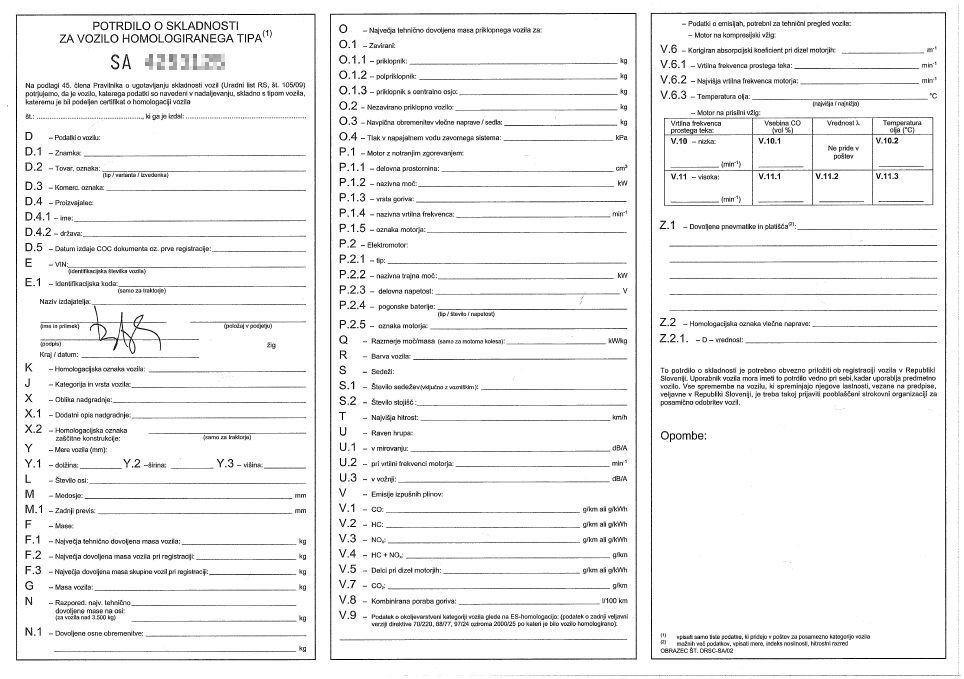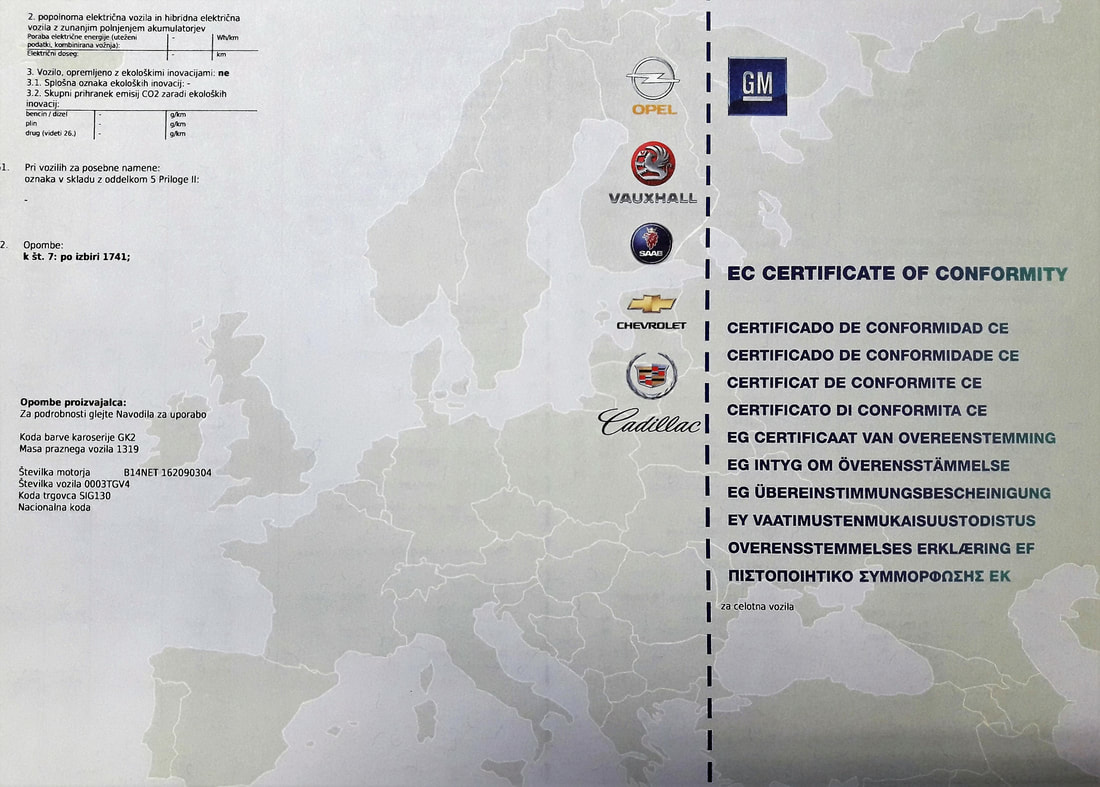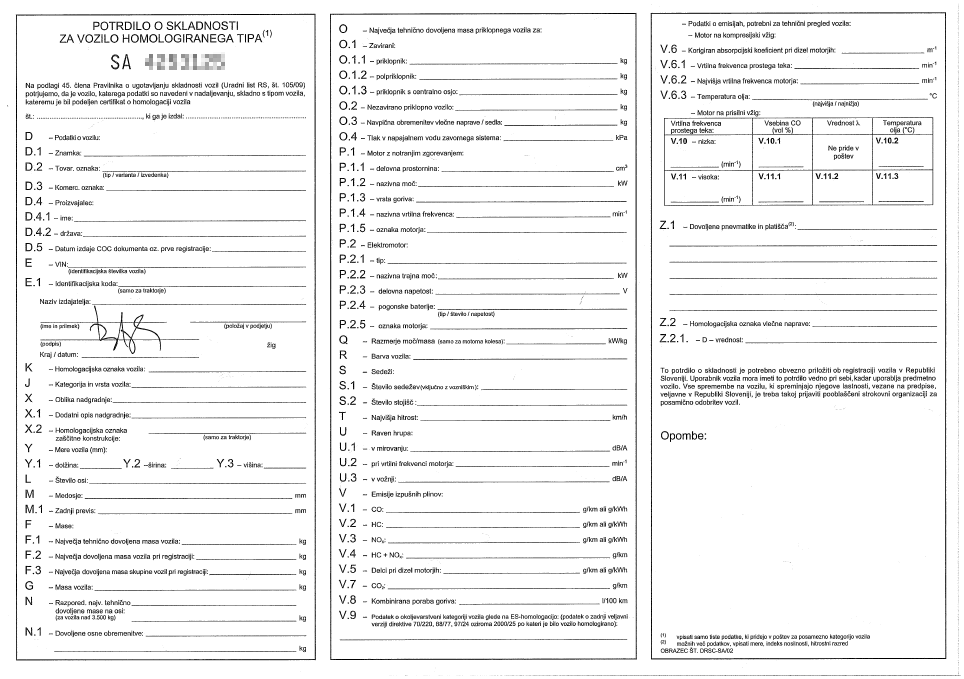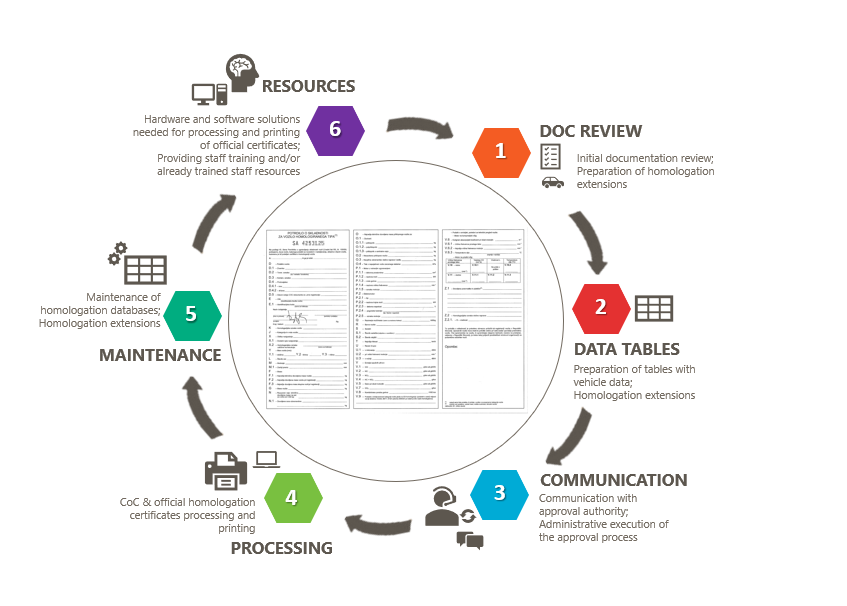WHAT IS AUTOMOTIVE HOMOLOGATION?
Homologation of the vehicle is the responsibility of the manufacturer to make sure that manufactured vehicle meets official standards for destination countries. In simpler terms, it means the manufacturer can start the sales when the manufactured vehicle has passed all mandatory tests and standards.
The EU directive enables manufacturers to have different vehicle types approved, such as:
Furthermore, the EU directive allows manufacturers to get homologation approval in one member state and market the same vehicle in other member states, without additional requests for any further tests.
The EU directive enables manufacturers to have different vehicle types approved, such as:
- Passenger vehicles
- Commercial vehicles
- Motorcycles
- Trailers
- Agricultural vehicles, etc.
Furthermore, the EU directive allows manufacturers to get homologation approval in one member state and market the same vehicle in other member states, without additional requests for any further tests.
Vehicles are usually tested for four main group standards:
- Passive safety, including crash tests, child restraints and seat belts testing
- Active safety such as Brake and Steering systems
- Components & Systems, including tests of Glass, Wipers, lighting, horn, mirrors, tires, tank, rear view system and warning triangle
- Environment regulations, including testing for fuel consumption, EMC, Noise and Air emissions
WE CAN ASSIST YOU IN EXECUTING THE ENTIRE PROCESS, INCLUDING THE PREPARATION OF THE HOMOLOGATION DOCUMENTATION, AND THE DELIVERY OF OFFICIAL CERTIFICATES; OR JUST INDIVIDUAL PARTS OF LOCAL HOMOLOGATION PROCESSES.
OUR SERVICES
Our services include type approvals for different types of personal and commercial vehicles, which are divided into two main groups: Preparation of local homologation documentation and Delivery of Certificates of Conformity.
LOCAL HOMOLOGATION
|
DELIVERY OF LOCAL CERTIFICATES OF CONFORMITY
|
Different clients have different needs - some only need consulting or the homologation documentation, while others require the entire homologation process.
End-to-end homologation process is explained in the diagram below. Each stage is adopted to client's needs and is considered a separate unit, which can be delivered independently.
End-to-end homologation process is explained in the diagram below. Each stage is adopted to client's needs and is considered a separate unit, which can be delivered independently.









